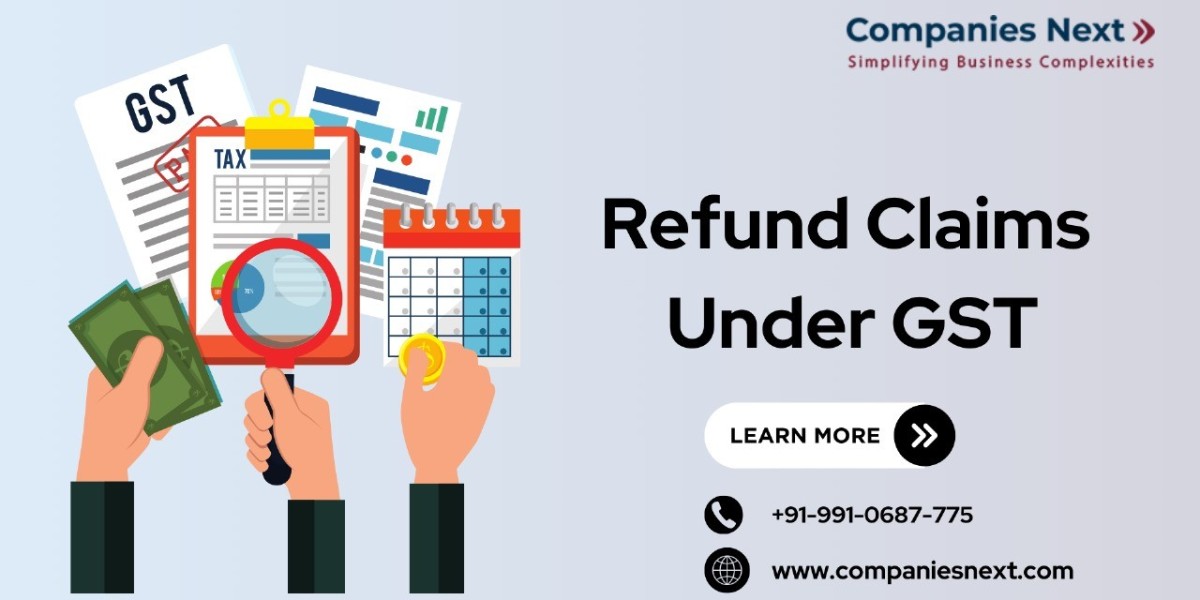The Goods and Services Tax (GST) regime in India, implemented from July 1, 2017, brought significant changes to the country's indirect tax structure. Among its many provisions, the GST framework includes mechanisms for taxpayers to claim refunds under specific circumstances. Understanding how refund claims work is crucial for businesses and individuals to effectively manage their tax liabilities and cash flows. This article provides an insightful overview of refund claims under GST in India.
Types of Refunds Under GST
Refunds under GST can broadly be categorized into the following types:
Refund of Excess Input Tax Credit (ITC):
- This type of refund arises when the input tax credit accumulated by a taxpayer is more than the output tax liability. For example, if a business pays GST on inputs (purchases) but exports goods or services (which are zero-rated), they can claim a refund of the excess ITC.
Refund of Excess Cash Balance:
- When GST paid through cash exceeds the GST liability for a specific period, the taxpayer can claim a refund of the excess cash balance.
Refund of Tax Paid on Inverted Duty Structure:
- This refund is applicable when the tax paid on inputs is higher than the tax paid on outward supplies (output). For instance, if the GST rate on inputs is higher than on the final product, a refund can be claimed for the excess tax paid.
Refund on Account of Accumulated Input Tax Credit Due to Inverted Duty Structure for Fabrics:
- Specific to the textile sector, this refund applies when the GST paid on inputs (like yarn) is higher than the GST on the final product (like fabric).
Refund on Supplies to SEZs (Special Economic Zones) and Export Oriented Units (EOUs):
- Suppliers making supplies to SEZs or EOUs can claim refunds on taxes paid for such supplies.
Process for Claiming Refunds
The process for claiming refunds under GST follows a structured approach to ensure transparency and efficiency:
Filing of Refund Application:
- Taxpayers must file an online refund application on the GST portal (www.gst.gov.in) using Form GST RFD-01. The form must be accompanied by supporting documents depending on the type of refund being claimed.
Verification and Processing:
- Once the application is submitted, the tax authorities verify the details provided and may seek additional information or documents if required.
Refund Sanctioning:
- Upon verification, if the application is found to be in order, the refund amount is sanctioned and credited directly to the taxpayer's bank account through the electronic credit ledger.
Rejection and Appeals:
- If the refund application is rejected, the taxpayer is notified with reasons for rejection. They can appeal against such decisions to the appropriate authorities.
Key Considerations
Documentation: Ensure all supporting documents such as invoices, shipping bills, and bank statements are accurate and readily available.
Timely Filing: Refund claims must be filed within prescribed timelines to avoid penalties or delays in processing.
Compliance: Adherence to GST rules and regulations is critical to avoid discrepancies in refund claims.
Online Portal: Familiarize yourself with the GST portal for seamless filing and tracking of refund applications.
Conclusion
Refund claims under GST in India provide relief to taxpayers by allowing them to recover excess taxes paid under various scenarios. However, navigating the refund process requires understanding the specific conditions and documentation requirements associated with each type of refund. By staying informed and compliant with GST regulations, businesses and individuals can effectively manage their tax obligations and optimize cash flows within the GST framework.
In conclusion, while GST has simplified the indirect tax landscape in India, mastering refund claims adds another layer of efficiency and compliance for taxpayers across various sectors of the economy.



